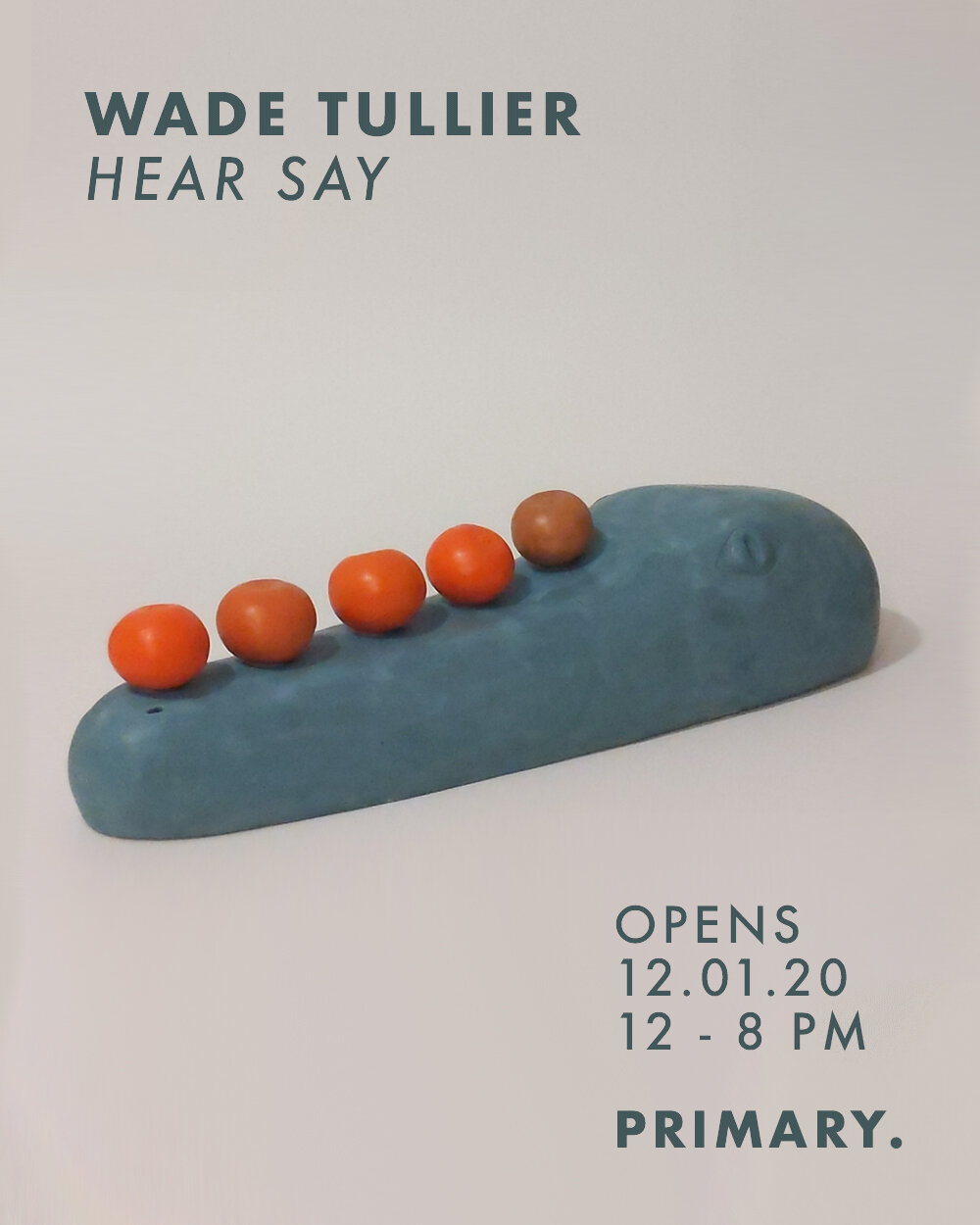
Hear Say
A need to tell and hear stories is essential to our species – second in necessity apparently after nourishment and before love and shelter. Millions survive without love or home, almost none in silence; the opposite of silence leads quickly to the narrative. The sound of story is the dominant sound of our lives, from the small accounts of our day's events to the vast incommunicable constructs of psychopaths - Edward Reynolds Price.
Primary is proud to present Hear Say, a collection of new sculptural works and paintings by the Detroit based ceramicist Wade Tullier.
Storytelling, the social and cultural activity of sharing stories, is an oral form of language, predating the written word, associated with the practices and values essential to developing one's identity.
Much in how our ancestors pass down anecdotes to shape the community's morals and educate younger generations, Tullier's practice mimics these verbal processes. The repetition he puts forth develops into the physical myth, adding a multitude of layers to the dominant stories surrounding Tullier's work.
"I make sculptures that depict animals, figures, phenomena, and everyday objects. They are always recognizable but become elusive as I continue to reinterpret each piece. In this way, my sculptures act as characters in oral history: they transform as they are retold. While these objects remain familiar and are easily identifiable, the combinations of works remain ambiguous. They echo the layered, nonlinear structure of memory as it is excavated through storytelling."
Oral traditions transmit history from memory to the next set of knowledge keepers—starting with personal narratives that become storied, and eventually, the myths that make up our shared identities. The essence of history is still present, but the form it has taken on has shifted. Tullier uses this serial method to explore how the physical state and conceptual meanings change over time.
"The imagery in my ceramics traces back to the stories I heard as a child growing up in southern Louisiana. The objects I create pull from this history of natural disasters and human-made catastrophes, chance encounters with wildlife, and occasionally my unsettling experience as a forensic sculptor and researcher. My work responds to the natural world in an effort of balancing pleasure with pain and danger with awe."

